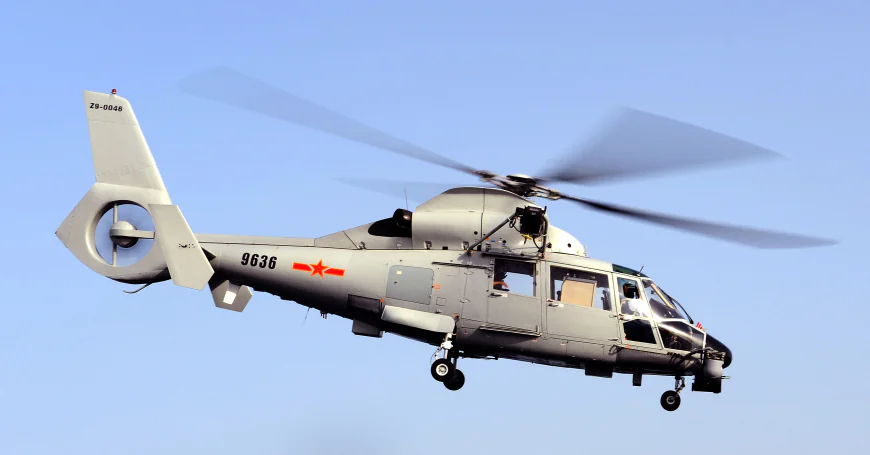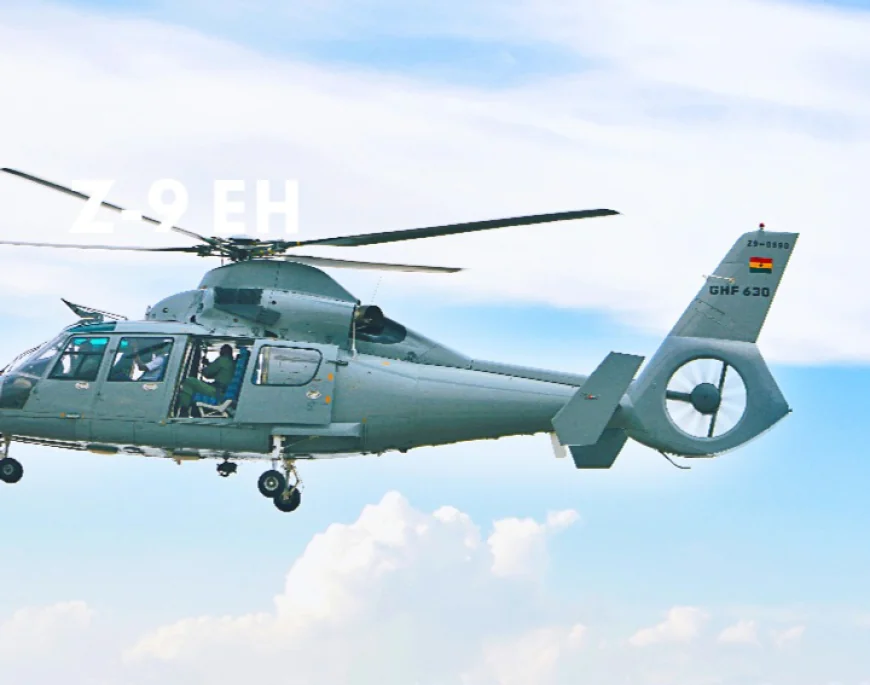China’s Z-9C Naval Helicopter: A Multi-Role Force in Maritime Defence
From French Design to Chinese Power: The Z-9C Story. PLAN’s Z-9C Brings Speed, Range, and Versatility to the Seas

The People’s Liberation Army Navy’s (PLAN) Z-9C helicopter stands out as a versatile asset in China’s maritime defence strategy, combining anti-submarine warfare, anti-ship operations, and search-and-rescue (SAR) capabilities in a single platform.
Derived from the Z-9 utility helicopter—a licensed Chinese production of the French Eurocopter Dauphin—the Z-9C is purpose-built for naval operations. Its adaptability allows it to deploy from a variety of vessels, enhancing the PLAN’s operational reach across contested waters.

● Design and Capacity
With a two-person crew, the Z-9C can be configured to transport up to 73 troops, 48 paratroopers, or a range of medical evacuation setups, including 12 intensive-care stretchers. The aircraft can carry a maximum payload of 7,050 kg under normal conditions or up to 9,250 kg in overload mode. Measuring 24.46 metres in length with a wingspan of 25.81 metres, the helicopter offers a balance between size and manoeuvrability essential for naval deployments.
● Performance Edge
Powered by two Pratt & Whitney Canada PW127G turboprop engines, the Z-9C achieves a cruise speed of 482 km/h and can cover 1,555 km with a standard payload. Its ferry range extends to 5,000 km, enabling long-distance deployments without the need for immediate refuelling. In emergencies, the Z-9C can operate on a single engine at altitudes of up to 4,125 metres, with an absolute ceiling of 9,145 metres.
An optional in-flight refuelling probe further extends its operational endurance, a critical factor for extended maritime patrols or sustained rescue missions.
● Strategic Role
The Z-9C’s integration into the PLAN fleet signals China’s emphasis on multi-role aviation assets that can respond rapidly to evolving maritime threats. In anti-submarine warfare, it can deploy sonar systems and torpedoes, while in anti-ship missions, it serves as a platform for guided munitions. Its SAR role underscores the aircraft’s humanitarian potential, offering rapid response to emergencies at sea.


